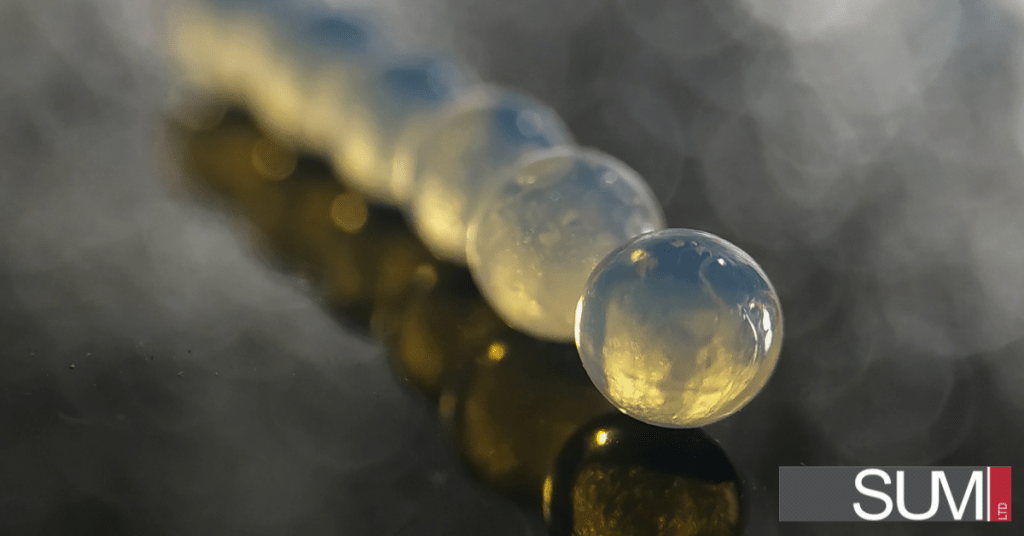Lightweight, refractory, and durable, silica textiles are long-lasting textiles used to protect instruments operating at extreme temperature ranges for a variety of industries, resulting in reduced energy expenditures. Depending on the environment in which your instrument resides, your instrument’s insulation may require protection with silica textiles. Consult an industrial insulation expert at SUM Ltd to assist you in building your next custom removable insulation blanket.
What are silica textiles?
Containing 96% of amorphous silica and traces of other elements, Silica textiles use a continuous filament of silica woven to retain its strength and flexibility within high temperatures environments of up to 1,000°C (1,800°F) of continuous exposure and only begins to melt at temperature of 3000°F (1649°C).
There are three types of crystalline orientations: Crystalline, polycrystalline, and amorphous. Crystalline is an atomic structure that repeats periodically across its whole volume, regardless of its length. Common examples of crystalline solids include sodium chloride, diamonds, and sodium nitrate. A polycrystalline solid is comprised of many crystallites (also known as grains) across a length scale. When each crystallite is thought of as an individual crystal, a polycrystalline solid can be seen as several crystallites. Most inorganic solids are polycrystalline, including all common metals, alloys, and many ceramics. Amorphous solids lack a clearly defined shape or form of atoms with an infinite translational symmetry in all three dimensions. Applied external forces cause the solid to bend, twist to distort its shape, but reverts to its original shape after the force is removed. Examples include glass, gels, rubber, and plastic. While silica can be found in both crystalline and amorphous forms, silica textiles benefit greatly from both the high tensile strength and flexibility of amorphous silica.
Silica textiles are woven using a 4-harness satin (also known as crow’s foot) weave. Satin weaves are the most pliable weave due to less frequent over/under crossings, allowing the textile to form around compound curves more easily. A single filament floats over 3 to 7 times before crossing an intersecting filament. Cutting a satin weave may cause the textile to unravel as each filament is not held as tightly.
There are two other types of weaves:
- Plain weave: Plain weave is one of the most common weaves where each filament crosses over and under alternately as it reaches another intersecting filament. The over/under crossing creates a rigid textile that does not unravel easily when cut or handled.
- Twill weave: Twill weave floats 2 or 3 intersecting filaments before crossing over/under, creating a herringbone design. With less frequent over/under crossings of each filament, twill weave also forms a more pliable, flexible weave than plain weave styles.
What are the benefits of using silica textiles?
Silica textiles offer a variety of advantages:
- Durable: The material properties of amorphous silica provide silica textiles high tensile strength and durability. Coatings are also available to further improve abrasion resistance and tensile strength.
- Water and oil resistance: Thanks to certain coatings, silica textiles are capable of resisting water and oil.
- Chemical resistance: Silica textiles are highly resistant against oxidation and most industrial chemicals except for strong alkalis, hydrofluoric acid and sodium.
- High temperature rating: up to 1,000°C (1,800°F) of continuous exposure and a melting temperature of 3000°F (1649°C).
- Ease of use: The flexibility of amorphous silica filaments allows a silica textile insulation blanket to bend to an instrument’s form with ease.
What are the applications for silica textiles?
- Heat conservation: For high heat instruments, silica facing insulation blankets minimize process disturbances, energy loss and equipment replacement costs.
- Employee Personal Protection: Adding an appropriately composed silica facing insulation blanket between personnel and equipment can increase productivity in high-heat equipment areas, allowing employees to continue working at longer intervals.
Conclusion
SUM Ltd builds custom-fitted insulation blankets for every project. To us, perfection is the only standard, and a job well done is a blanket that precisely matches every bend, curve, or loop of your instrument. To achieve this, our dedicated staff members always measure and remeasure your equipment. After all, we are firm believers of measuring twice and cutting once.
Our attention to build quality has earned us the trust of companies around the world. You can find our insulation on North Sea drilling platforms, Argentinian instruments, or right at home in BC ships and mines. If you need assistance with choosing the right materials for your custom insulation blanket, book a consultation with SUM Ltd today.
